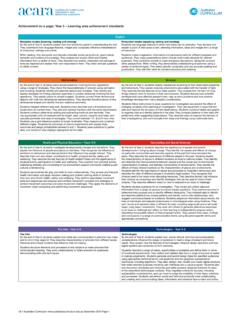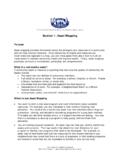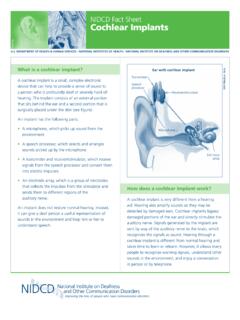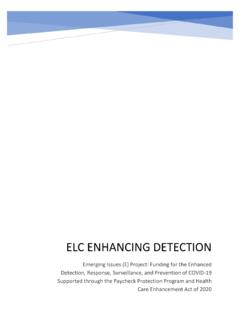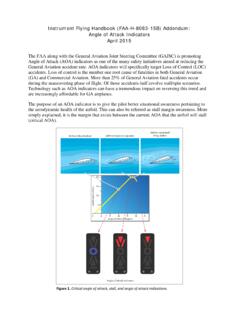Transcription of PGS Performance Governance System - Secretary of Health
1 1 PGS Performance Governance System The Performance Governance System (PGS) was launched way back in 2008 where the Philippines was considered by the Millennium Challenge Corporation (MCC) who selected the Department of Health , together with the other national government institutions such as the Department of Education (DepEd), Philippine National Police (PNP), Department of Transportation and Communication (DOTC), Department of Public Works and Highways (DPWH), and the Bureau of Internal Revenue (BIR), the pilot test areas for Good Governance through the institutionalization of the Performance Governance System (PGS) of which the MCC espoused particular criteria such as Ruling Justly, Investing in People, and Economic Freedom. The foregoing criteria were encapsulated by the MCC through a Compact Agreement decided by the said six (6) National Government Agencies in 2009 with the following objectives to be accomplished; 1.
2 To identify points of alignment on existing government Performance systems as mandated by 9013 otherwise known as the Philippine Quality Award System with the PGS. 2. Agree on how to harmonize the PGS with the existing Government Performance Management System MCC tapped the services of the Institute for Solidarity in Asia (ISA) for technical assistance in achieving its goals and objectives. In return, ISA established a four level of achievement namely: 1. Initiation Stage - Under this stage, the Vision, Mission and Values of each agency is translated into specific Agency Road Map showing directions of the agency in achieving its mandates in accordance with the Medium Development Goals established by the government and onwards before the year 2030. 2. Compliance stage The roles and activities of each unit and sub-units of the Department of Health are aligned or contributory to the achievement of the agency s goals and objectives associated to the government s programs under the Medium Term Development Goals (MTDG s).
3 The entire Health Policy and Planning Bureau (HPDPB) as the Office for Strategy Management (OSM) and all Centers for Health Development (CHD) Directors and Chiefs of Hospitals aligned all DOH programs to the Universal Health Care or Kalusugang Pangkalahatan from Barangay Health Units (BHU s), Rural Health Unit s (RHU s), Municipal to Provincial Health Offices. The DOH-PGS scorecard becomes the overarching policy framework into which 2 all programs must fit. When the different clusters/bureaus/Centers for Health Development plan their activities and request their budgets, they must design them so that they contribute to the realization of the objectives laid out in the PGS scorecard. 3. Proficiency Stage - In most cases, one of the first steps in this stage of the PGS is the establishment of the Office of Strategy Management (OSM) responsible for strategy development, scorecard management, organization alignment, planning and budgeting, human capital alignment, strategy communications, initiatives management, strategy review process, best practice sharing.
4 The DOH utilized the Health Policy Development and Planning Bureau (HPDPB) as the Office for Strategy Management (OSM) by virtue of Department Order No. 2011-0080. The OSM is also tasked to monitor through an established scorecard in every level aligned to the DOH or agency scorecard. The DOH is currently working to pass the proficiency stage through the conduct of an external auditor composed of Multi Sectoral Groups as evaluator and to be presented during a Revalida session scheduled this coming March 18 to 21, 2013. 4. Institutionalization Stage - breakthrough results will be evaluated if particular roles and activities of every element or individual in the organization is linked to the achievement of the DOH s, Mission Goals and Objectives. PGS aims to build a culture of participative Governance that will in turn strengthen Performance -based Governance in public institutions, and realize concrete and tangible results within 2-3 years from the time of enrolment or engagement in the System .
5 Critical requirements are expected from each of the stages, adopting a sequential process from strategy identification, formulation and successful strategy execution. The Performance Governance System (PGS) is the framework adopted by the Department of Health in 2009 to better implement and sustain its Health reforms and programs which was in 1998 through the Health Sector Reform Agenda (HSRA). The Universal Health Care or Kalusugan Pangkahalatan (UHC/KP) builds on the concepts and principles of HSRA to realize significant outcomes especially for the poor in terms of better Health , financial risk protection, and assured access to Health facilities. Focusing on these three important outcomes speak of the responsiveness of the Health System for the Filipino poor. It is envisioned that by 2030, DOH has fully achieved its goals for all Filipinos.
6 PGS is designed to strengthen government institutions by focusing on the attainment of long-term vision and by reducing the gap between strategy formulation and strategy implementation to achieve intended results. It seeks to empower organizations to translate their multitude of plans into a singular vision that is highlighted in a Strategy Map which is a visual representation of the strategies and objectives as these are interconnected and executed. (see Figure 1). 3 DOH Pathway to Better HealthBy 2030 Health GovernanceEquityVISION: A Global Leader for attaining better Health outcomes, competitive and responsive Health care systems, and equitable Health care financing. VISION: A Global Leader for attaining better Health outcomes, competitive and responsive Health care systems, and equitable Health care financing. CORE VALUES:Integrity Excellence CompassionCORE VALUES:Integrity Excellence CompassionMISSION.
7 To guarantee equitable, sustainable and quality Health for all Filipinos, especially the poor, and to lead the quest for excellence in Health OutcomesBetter Health OutcomesResponsive Health SystemsResponsive Health SystemsPeople EmpowermentSocial ImpactEquitable Health FinancingEquitable Health FinancingHigh Degree of Access and Utilization of Health Services by the PublicHigh Degree of Access and Utilization of Health Services by the PublicResourcesOrganizationRationalize allocation of budget for hospital, CHD and DOH programsImprove efficiency on financial proceduresGuarantee accountability in DOHE nsure productive, motivated and satisfied Health workforceDevelop an integrated and efficient information systemInternal ProcessesAlign research initiatives, policies, systems, and plans with UHCS trengthen information monitoring and evaluation systemsEnhance stewardship role of DOH to improve Health sector performanceEnsure rational use and distribution of Health services, facilities and technologiesStrengthen public internal management for more efficient spending for healthEnsure sustainable management of DOH Health facilities Figure 1: DOH Pathway to Better Health by 2030 The DOH PGS Pathway outlines the Vision, Mission, Goals, and Targets of the agency to be attained by 2030.
8 It has five perspectives or areas of excellence ( Social Impact, people Empowerment, Internal Processes, Organization and Resources) and two key strategic categories: Equity and Health Governance , and 15 agency broad objectives. These are: Better Health outcomes Equitable Health care financing Responsive Health systems High degree of access and utilization of Health services by the public Align research initiatives, policies, systems and plans with UHC/KP Strengthen information monitoring and evaluation systems Enhance stewardship role of DOH to improve Health sector Performance Strengthen public internal management for more efficient spending for Health Ensure rational use and distribution of Health services, facilities and technologies Ensure sustainable management of DOH Health facilities 4 Ensure productive, motivated and satisfied Health workforce Guarantee accountability in DOH Provide modern information System Rationalize allocation of budget for hospitals, CHDs and DOH Programs Improve efficiency on financial procedures PGS execution in DOH is still a work in progress.
9 It is still being reviewed to fine tune the strategies toward the directions and goals of the new Administration under President Benigno Simeon Aquino III and reformulated to be more responsive to the needs of the Health sector given its constraints. The central goal of the Administration for the Health of Filipinos is to finally realize: Universal Health Care or the Kalusugan Pangkalahatan (KP). In order for the DOH to successfully implement KP and the PGS, a multi-sectoral Governance council called the National Advisory Committee for Health (NACH) was initially organized in June 29, 2011 when it had its 1st meeting. NACH to date has representatives from the Local Government Units (LGUs), other Government Agencies (OGAs), NGOs, academe, legislative body, private sector, media, and professional groups. Health Secretary Enrique T.
10 Ona, being the Chairman of NACH, stressed the important dual role of NACH as an advisory body and Performance evaluator of DOH in assuming its leadership role in the Health sector.


